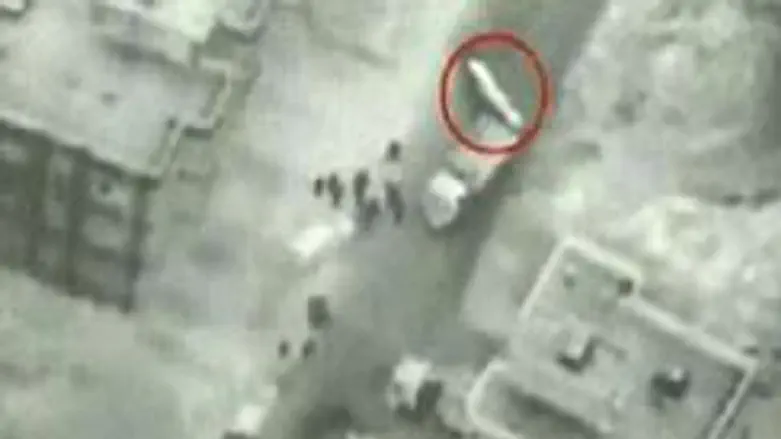
Hizbullah defied the maps Wednesday and claimed that the rocket explosion that reportedly killed five of its terrorists near <?xml:namespace prefix = st1 ns = "urn:schemas-microsoft-com:office:smarttags" />
The large explosion rocked the house of senior Hizbullah operative Said Issa, which was being used as an arms cache for the terrorist organization. The house was located in Tayr Filsay, a village approximately 15 km east of the coastal city of
<?xml:namespace prefix = o ns = "urn:schemas-microsoft-com:office:office" />
The United Nations Security Council ceasefire resolution that ended the five-week-old Second Lebanon War three years ago was formally mandated to keep the terrorist organization’s rockets outside of the zone, which includes the area in which the explosion occurred. UNIFIL commanders have said they could not effectively enforce the ban on weapons of foreign armies and terrorists.
Hizbullah terrorists deny they violated the ceasefire agreement that ended the 2006 Second Lebanon War -- but Israeli officials say that IDF intelligence photos and video footage prove otherwise.

In the complaint, Ambassador Shalev warned that
"This is yet another manifestation of the ongoing violations of U.N. Security Council Resolution 1701 in
Hussan Alhaj Hassan, a Hizbullah member of the Lebanese parliament, claimed that reasons for the explosion are unknown, but other local sources confirmed that the source of the explosion was a rocket in a storage facility at Issa's home. They said several people were wounded, and that Issa and his son were killed.
UN 'very concerned'
Lebanese Army officials have stood by Hizbullah's denial of the claim: they insist that only one person was injured and none were killed in what they referred to as "a garage accident." Electricity in the entire village was cut following the blast, and Lebanese Army soldiers blocked off the area upon their arrival.
Hizbullah blamed
U.N. Special Coordinator for Lebanon, Michael Williams, responded that he was "very concerned" by reports coming from southern Lebanon, adding, "We are keeping a close eye on this because of its relevance to Resolution 1701."
Photos and video footage filmed after the explosion by an Israel Air Force unmanned aerial vehicle (UAV) show Hizbullah operatives smuggling Katyusha rockets and other weaponry out of the destroyed warehouse and into another facility in southern Lebanon.

The UAV was directed to the site of the incident after the explosion. The film and photos clearly show a large number of people arriving at the scene and loading Katyusha rockets and other arms on to trucks, and then covering the weaponry in order to hide it. They are seen driving with it to another storage site in the village of Dir Kanun A-Nahar, 3 kilometers southwest of Tayr Filsay, where they unloaded the arms.
As in a prior incident that occurred earlier this summer, Lebanese Army soldiers and troops from the United Nations Interim Force in Lebanon (UNIFIL) failed to arrive at the scene in time to catch the terrorists in the act of smuggling out the contraband weaponry. The forces are seen in the IAF photos arriving at the site of the explosion only after the weaponry was smuggled from the area.
Khirbit Salim: 'Blatant Hizbullah Rearmament'
A Hizbullah weapons depot located in the southern Lebanese village of Khirbit Salim exploded on July 14, 2009, close to Israel's northern border. Israel requested that the United Nations share the findings of the investigation into the incident conducted by UNIFIL and "stressed the gravity with which Israel views Hizbullah's blatant rearmament."
In a statement released to the media at the time, the Foreign Ministry noted the evidence of Hizbullah's brazen accumulation of weapons and stockpiling of ordnance, as well as the organization's growing strength.
The Ministry called on UNIFIL to "act effectively, with determination and resolve against Hizbullah's efforts to rearm, in flagrant violation of resolutions of the U.N. and its Security Council."
All photos and maps are courtesy of the Ministry of Foreign Affairs and the IDF Spokesman's Unit.